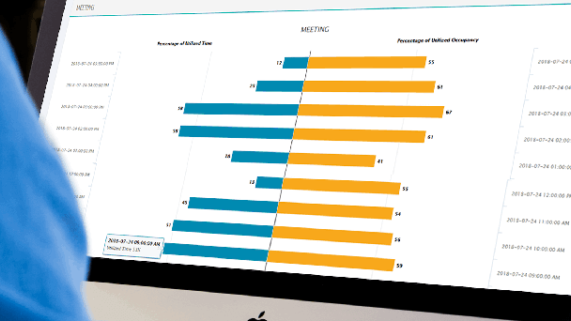Introduction
It’s no surprise that normal work modes and habits moving into 2021 will be drastically different than those in recent past years. Plus, many subjects seem to be gaining traction with relative ease in the workforce. For instance, these include working from home, employee flexibility, emphasis on health and safety. One major change that is a bit more elusive is an increased focus on leveraging facility space and worker data. As a result, companies use workplace analytics to improve efficiency, employee experiences, and how the facility is utilized.
Further, data analytics an increased scrutiny placed on the workplace was already gaining traction before the COVID-19 pandemic. But it now seems to have solidified its footing amongst leading organizations. In fact, Gartner’s recent report, “9 Future of Work Trends Post COVID-19” listed expanded data collection as the second trend. And it seems to be one of the more complex topics to both digest and execute.
4 Ways to Leverage Data in 2021
IoT platforms play a key role in supporting the growing data-driven workplace. For example, AVUITY’s solutions use overhead sensors, booking data, and smartphone space-reservations to pull workplace analytics. Further, this technology gives facility managers a deep understanding of their real estate. Also, it empowers employees to find the best spaces to work efficiently.
While some may view this as an encroachment on privacy, most organizations are not gathering any personally identifiable data. Rather, they use occupancy, behavior, and usage data to improve employee experience and better support the health and safety of those who work in and visit their facilities.
Further, the following are four important ways facility managers can leverage data to not only make returning to work easier. But, they can also promote a more flexible, healthier and more effective environment for facility end users.
- Understand Space Usage
As many leading organizations prepare to return at least a portion of their workforce to the office through the beginning of next year, it is important they understand how full their spaces are and what sort of usage capacity they can support. Only with headcount and usage data can teams begin to measure how well they’re performing with regards to maximum capacity regulations. This data supports both a deep understanding of workspace utilization and the way future spaces might best support the needs of the changing workforce beyond 2020.
- Increase Employee/Occupant Awareness
Many employers tell employees to continue working from home indefinitely. While others expect workers for scheduled intermittent office visits. As a result, it makes meeting room, workstation, and huddle space availability easily accessible. It is essential to lowering “return to work” fears and showing users that their organization cares about their concerns. Further, smartphone apps, interactive map displays, and digital signage are all professional ways of delivering this data to users. These methods increase the flow of information and help users identify an ideal and unoccupied place to get work done. Whether that be based on capacity, location, or amenities to support work preference. Also, Gartner’s research showed that contracted or contingent workers are replacing many full-time employees. As a result, it makes the need for office information visibility even more relevant.
- Inform Space Changes
Will cubicles be an appropriate workstation going forward? Does our office need more open collaboration spaces? Are our current meeting rooms too large for the desired capacity? You should expect these questions as real estate expenditure continues to become more scrutinized in the days ahead. Measuring space usage to adjust furniture is important. Plus, space allocation and configuration is key to support workplace habits and norms. This is because they will become increasingly important as offices continue to reopen. For instance, one key metric is gathering data to see which spaces are in high demand. Plus, it is particularly new to the corporate real estate market. Further, it is important to understand these spaces. As a result, employers can ensure secure and built out new buildings with the best spaces. Thus, this will support the work of today and tomorrow, which is more important now than ever before.
- Improve Building Services
It’s no secret that cleanliness and workplace hygiene is a key concern for physical office space. Further, leveraging usage and occupancy data helps your company in many ways. For instance, this data helps employers ensure the cleanliness of the following places:
- Workstation
- Common area
- Restroom
But it can also save time and money over traditional scheduled cleanings. In fact, many organizations are exploring and adopting this type of usage-focused model. Thus, this supports their workers and demonstrate their commitment to employee health and safety in the workplace.
While no one is certain how exactly corporate America will move into 2021 as “return to work” strategies will differ across organizations. One thing does seem certain: data will play a key role. Employee experience, data science, visibility, and an emphasis on health and safety will continue to move to the forefront of organizational concerns. The workplace of the future is upon us. And facility managers need to understand how to access, gather and use available facility, and workplace data. As a result, this information ensures their spaces can evolve to meet changing needs. Ultimately, there are many ways your company can take advantage of workplace analytics.
This posting can be found originally published in Canadian Facility Management & Design Magazine.


